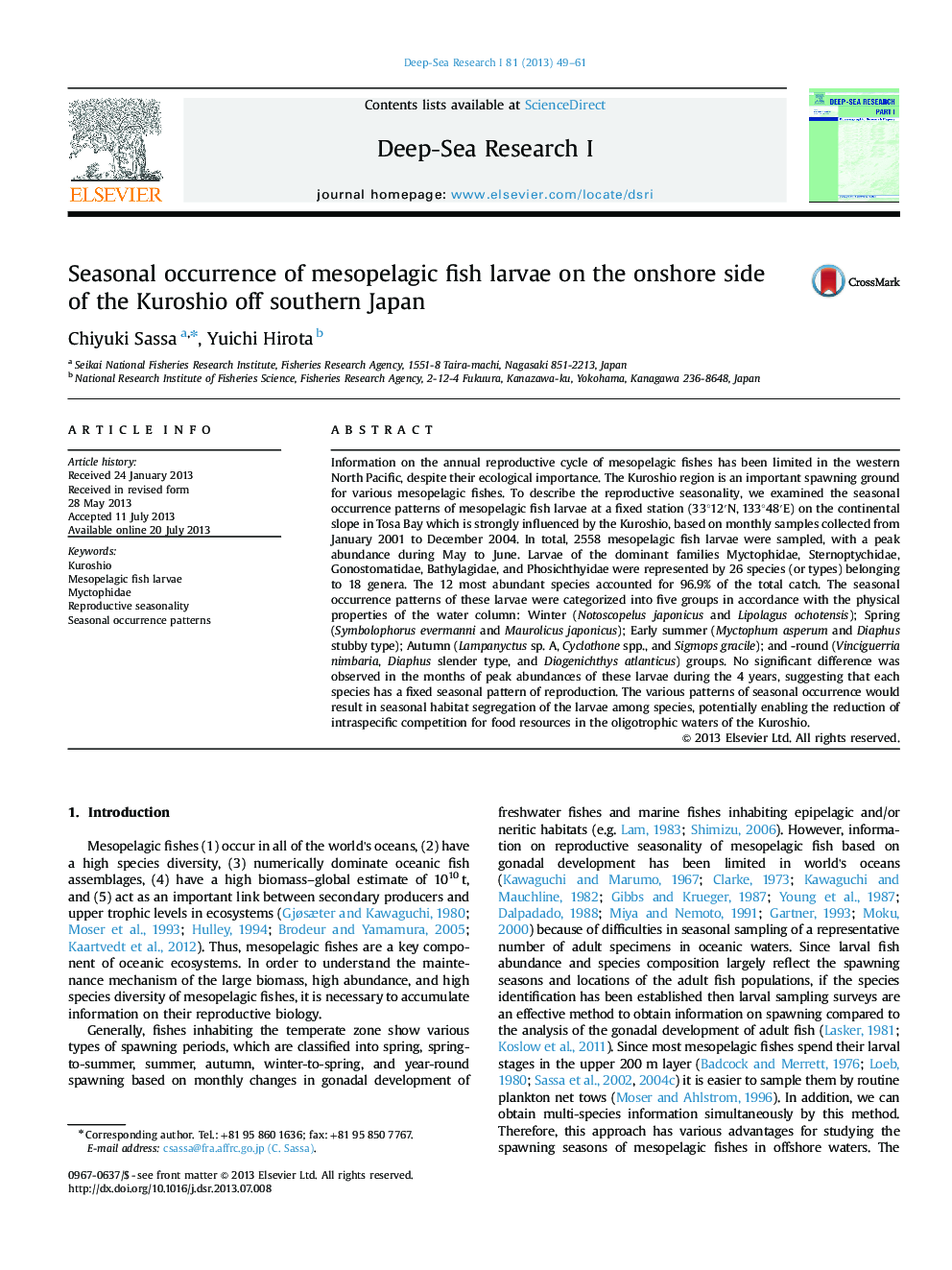| کد مقاله | کد نشریه | سال انتشار | مقاله انگلیسی | نسخه تمام متن |
|---|---|---|---|---|
| 4534581 | 1626349 | 2013 | 13 صفحه PDF | دانلود رایگان |

• A peak abundance of total mesopelagic fish larvae was during May to June in the Kuroshio water.
• The seasonal occurrence patterns of each species were categorized into five groups.
• No significant interannual difference was observed in the seasonal occurrence.
• Each species has a fixed seasonal pattern of reproduction.
Information on the annual reproductive cycle of mesopelagic fishes has been limited in the western North Pacific, despite their ecological importance. The Kuroshio region is an important spawning ground for various mesopelagic fishes. To describe the reproductive seasonality, we examined the seasonal occurrence patterns of mesopelagic fish larvae at a fixed station (33°12′N, 133°48′E) on the continental slope in Tosa Bay which is strongly influenced by the Kuroshio, based on monthly samples collected from January 2001 to December 2004. In total, 2558 mesopelagic fish larvae were sampled, with a peak abundance during May to June. Larvae of the dominant families Myctophidae, Sternoptychidae, Gonostomatidae, Bathylagidae, and Phosichthyidae were represented by 26 species (or types) belonging to 18 genera. The 12 most abundant species accounted for 96.9% of the total catch. The seasonal occurrence patterns of these larvae were categorized into five groups in accordance with the physical properties of the water column: Winter (Notoscopelus japonicus and Lipolagus ochotensis); Spring (Symbolophorus evermanni and Maurolicus japonicus); Early summer (Myctophum asperum and Diaphus stubby type); Autumn (Lampanyctus sp. A, Cyclothone spp., and Sigmops gracile); and -round (Vinciguerria nimbaria, Diaphus slender type, and Diogenichthys atlanticus) groups. No significant difference was observed in the months of peak abundances of these larvae during the 4 years, suggesting that each species has a fixed seasonal pattern of reproduction. The various patterns of seasonal occurrence would result in seasonal habitat segregation of the larvae among species, potentially enabling the reduction of intraspecific competition for food resources in the oligotrophic waters of the Kuroshio.
Journal: Deep Sea Research Part I: Oceanographic Research Papers - Volume 81, November 2013, Pages 49–61